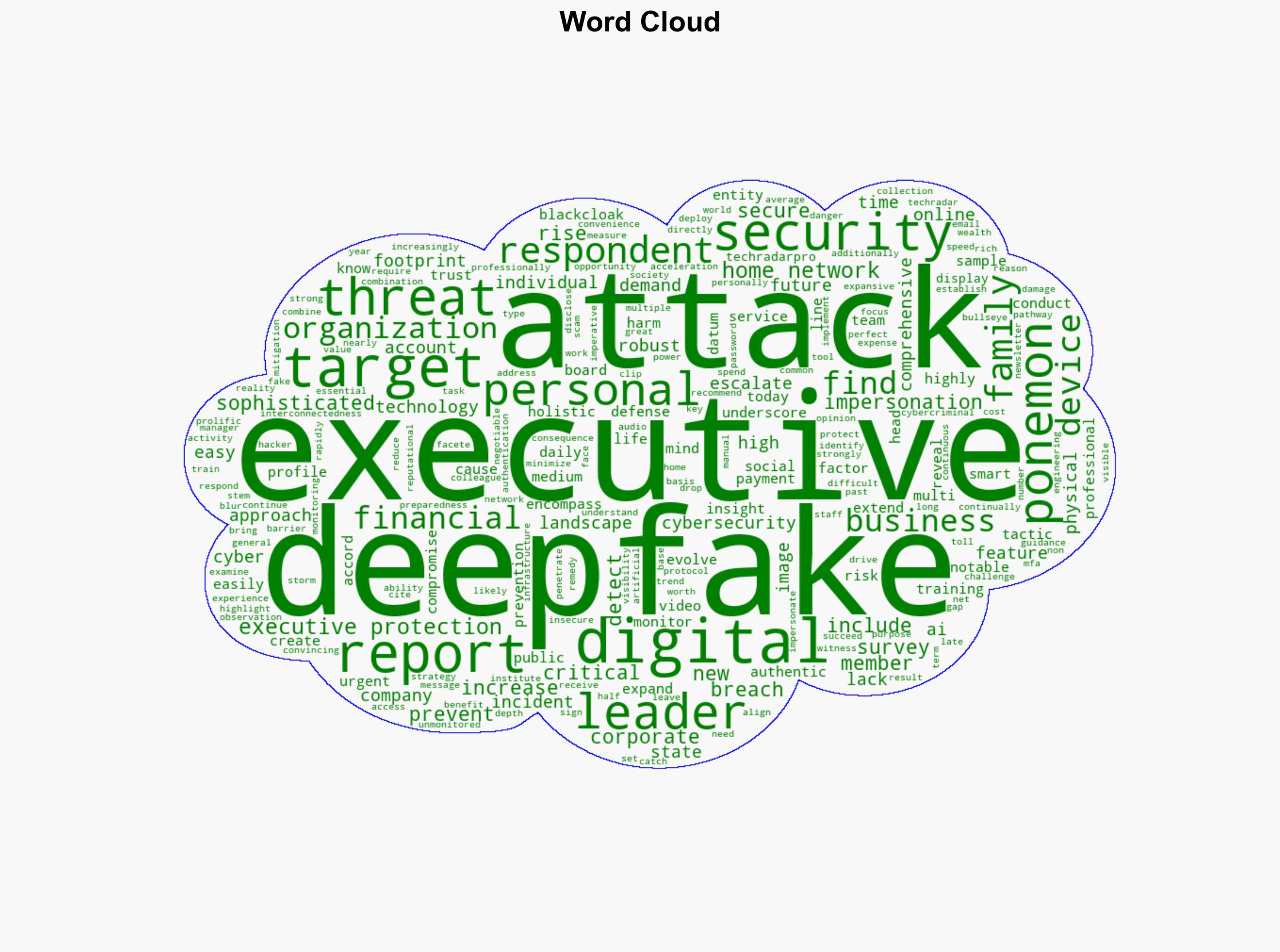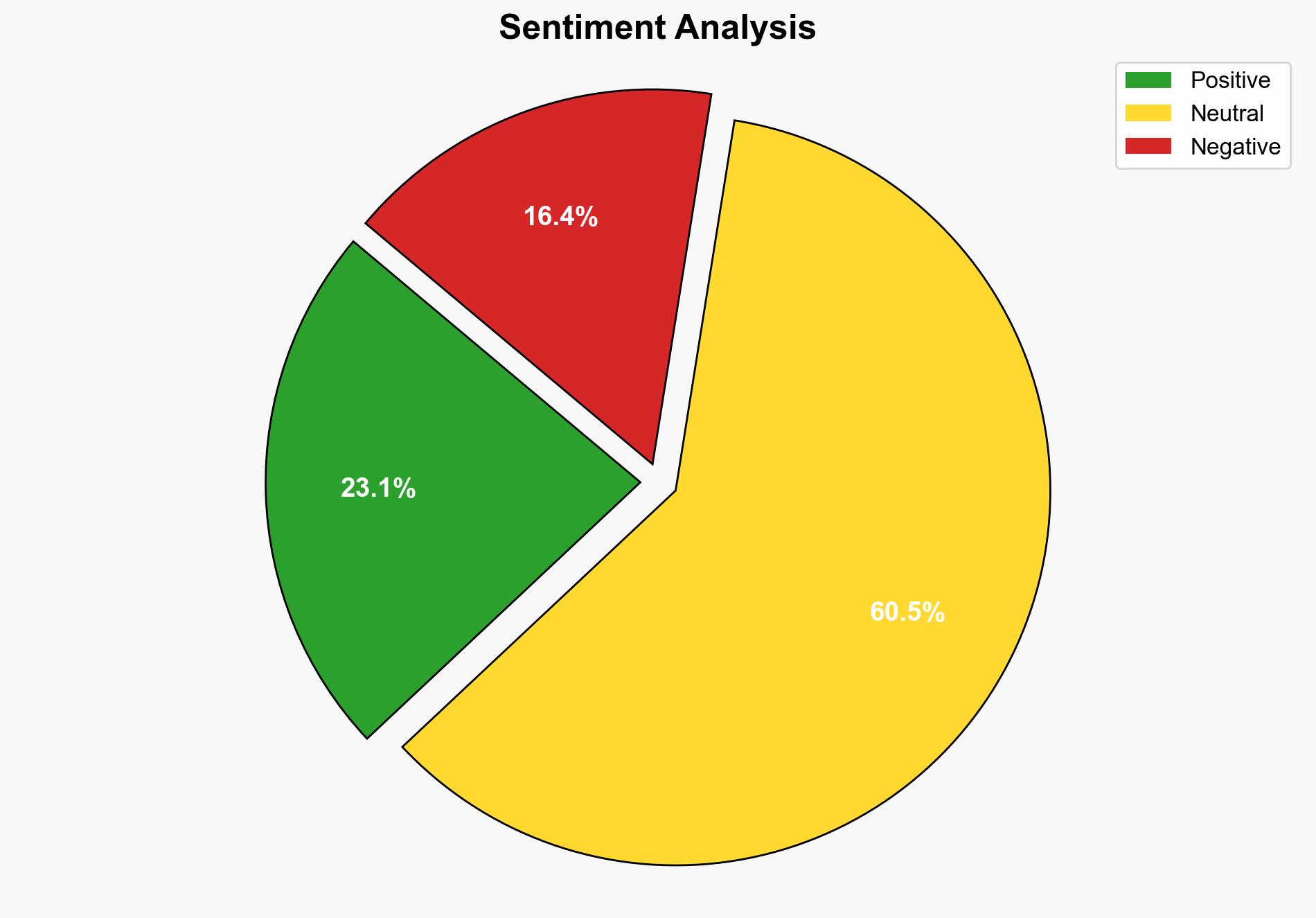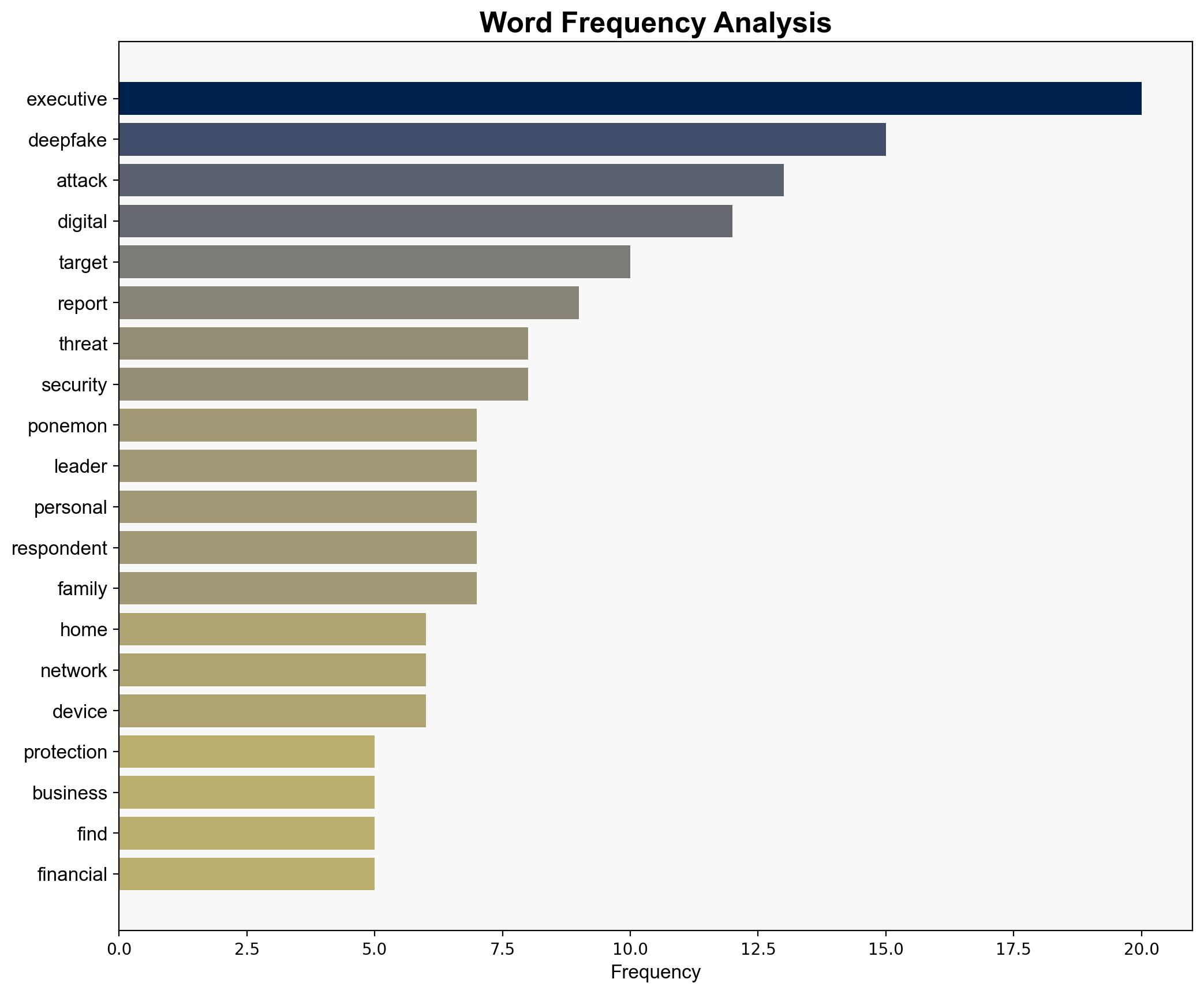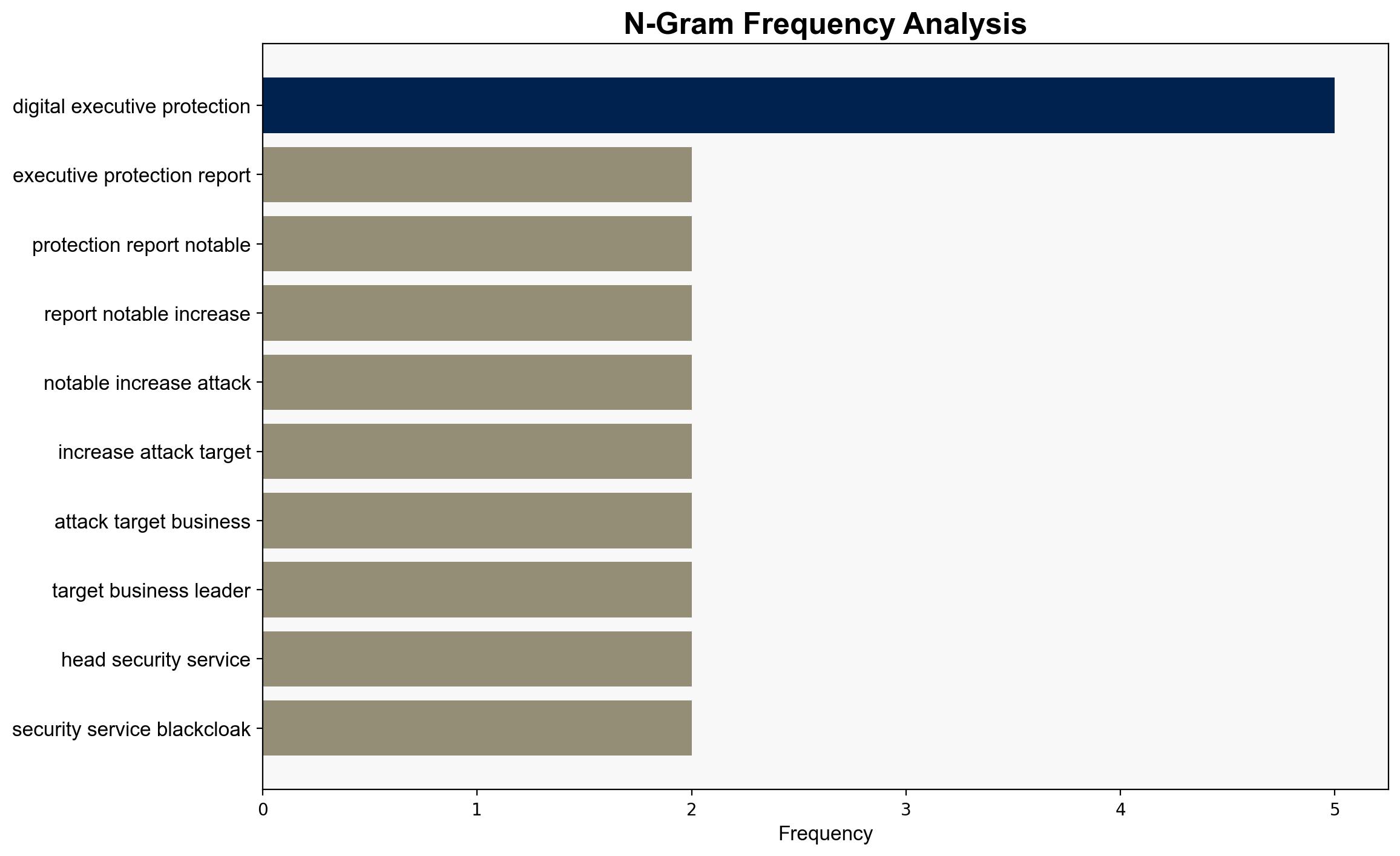Addressing the new executive threat the rise of deepfakes – TechRadar
Published on: 2025-08-26
Intelligence Report: Addressing the new executive threat the rise of deepfakes – TechRadar
1. BLUF (Bottom Line Up Front)
The most supported hypothesis is that the rise of deepfake technology poses a significant and escalating threat to business executives, primarily due to their expansive digital footprints and insufficient cybersecurity measures. Confidence Level: High. Recommended action includes enhancing cybersecurity training and implementing advanced detection technologies to mitigate deepfake threats.
2. Competing Hypotheses
Hypothesis 1: The increase in deepfake attacks on executives is primarily due to the proliferation of AI tools and the lack of cybersecurity preparedness among companies.
Hypothesis 2: The rise in deepfake attacks is more a result of executives’ high visibility and extensive digital presence, making them attractive targets, rather than solely a lack of preparedness.
Using ACH 2.0, Hypothesis 1 is better supported by the data, as the report highlights a general lack of cybersecurity training and preparedness as a critical factor. The availability of AI tools further exacerbates this vulnerability.
3. Key Assumptions and Red Flags
Assumptions include the belief that all executives have inadequate cybersecurity measures and that AI tools are universally accessible. A red flag is the potential underreporting of incidents due to reputational concerns. The report may also lack comprehensive data on the effectiveness of existing countermeasures.
4. Implications and Strategic Risks
The rise in deepfake attacks could lead to significant financial and reputational damage for companies, potentially destabilizing leadership and eroding trust. There is a risk of cascading threats, where successful attacks embolden further cybercriminal activities. Geopolitically, such attacks could be leveraged for industrial espionage or political manipulation.
5. Recommendations and Outlook
- Implement comprehensive cybersecurity training programs focused on deepfake awareness and detection.
- Invest in AI-driven detection technologies to identify and mitigate deepfake threats.
- Scenario Projections:
- Best Case: Companies rapidly adapt, reducing deepfake incidents through improved cybersecurity measures.
- Worst Case: Deepfake attacks become more sophisticated, leading to widespread financial and reputational crises.
- Most Likely: A gradual increase in deepfake incidents, with companies slowly adapting to the evolving threat landscape.
6. Key Individuals and Entities
The report does not specify individuals by name. However, it highlights business executives and high-net-worth individuals as primary targets.
7. Thematic Tags
national security threats, cybersecurity, counter-terrorism, regional focus




